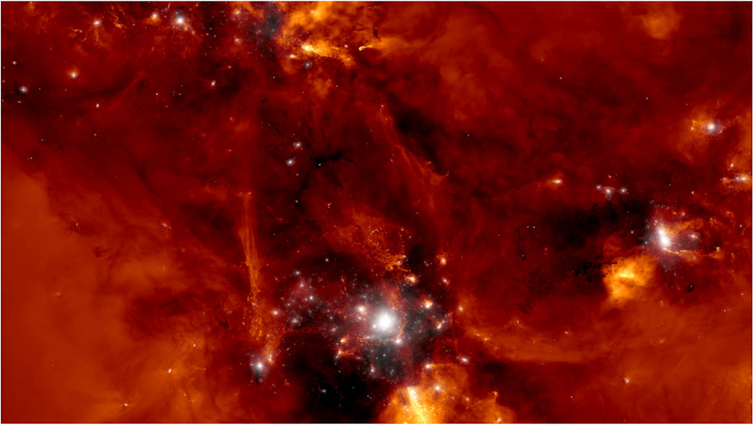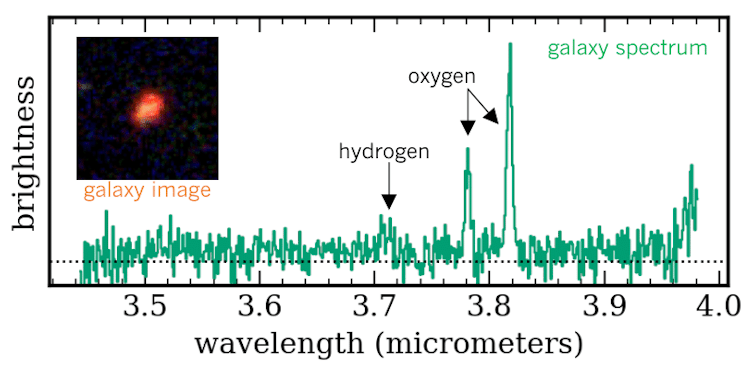As people, we are all shaped by the neighborhoods we grew up in, whether it was a bustling urban center or the quiet countryside. Objects in distant outer space are no different.
As an astronomer at the University of Arizona, I like to think of myself as a cosmic historian, tracking how supermassive black holes grew up.
Like you, every supermassive black hole lives in a home – its host galaxy – and a neighborhood – its local group of other galaxies. A supermassive black hole grows by consuming gas already inside its host galaxy, sometimes reaching a billion times heavier than our Sun.
Theoretical physics predicts that black holes should take billions of years to grow into quasars, which are extra bright and powerful objects powered by black holes. Yet astronomers know that many quasars have formed in only a few hundred million years.
I’m fascinated by this peculiar problem of faster-than-expected black hole growth and am working to solve it by zooming out and examining the space around these black holes. Maybe the most massive quasars are city slickers, forming in hubs of tens or hundreds of other galaxies. Or maybe quasars can grow to huge proportions even in the most desolate regions of the universe.
Galaxy protoclusters
The largest object that can form in the universe is a galaxy cluster, containing hundreds of galaxies pulled by gravity to a common center. Before these grouped galaxies collapse into a single object, astronomers call them protoclusters. In these dense galaxy neighborhoods, astronomers see colliding galaxies, growing black holes and great swarms of gas that will eventually become the next generation of stars.
These protocluster structures grow much faster than we thought, too, so we have a second cosmic problem to solve – how do quasars and protoclusters evolve so quickly? Are they connected?

A simulation of a galaxy protocluster forming. In white, clouds of dark matter collapse and merge, while the red shows the motions of gas falling into the gravitational pull of the dark matter halos.
TNG Collaboration, CC BY-NC-SA
To look at protoclusters, astronomers ideally obtain images, which show the galaxy’s shape, size and color, and a spectrum, which shows the galaxy’s distance from Earth through specific wavelengths of light, for each galaxy in the protocluster.
With telescopes like the James Webb Space Telescope, astronomers can see galaxies and black holes as they were billions of years ago, since the light emitted from distant objects must travel billions of light-years to reach its detectors. We can then look at protoclusters’ and quasars’ baby pictures to see how they evolved at early times.




